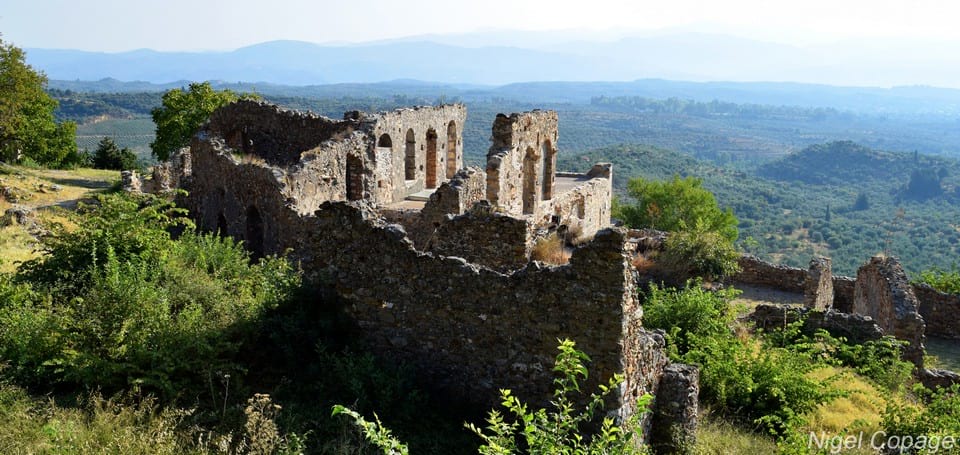
Mystras is a well-preserved late-Byzantine city which at its height was the capital of Byzantine Morea (the Peloponnese) and second in importance only to Constantinople. Its complex history is clearly evident in the fortifications, palaces, churches, monasteries, houses and public spaces which visitors are free to explore. Mystras is an outstanding example of late-Byzantine culture and should not be missed.
History
The origins of Mystra go back to 1249 when following the Frankish conquest of Morea (the Peloponnese), William of Villehardouin, Prince of Achaea, built fortifications on the steep slopes of Mount Taygetos close to his base at Lacedaemon (Sparta).
However 10 years later the Franks were defeated at the Battle of Pelagonia by the Nicaean Emperor Michael Palaiologos and in 1262 were forced to hand over the fortress to the Byzantines. For some years there was ongoing warfare between the Franks and the Byzantines so the inhabitants of Lacedaemon resettled in a new town at Mystras under the protection of the castle. The bishopric was transferred from Sparta to the new cathedral (“mitropolis”) of St Demetrius built in 1264.
From 1348 onwards Mystras became the residence of the “Despot of Morea” and was the capital of Byzantine Morea. This period was the golden age of the city which witnessed a remarkable cultural renaissance attracting many of the best known architects, artists and intellectuals among which was the Neo-Platonist philosopher Georgios Gemistus, later known as Plethon. Numerous monasteries were founded at Mystras and it became the final centre of Byzantine scholarship.
The last Byzantine Emperor, Constantine Palaiologos, was Despot of Morea before he came to the throne. His coronation took place at Mystras in 1448.
In 1460 the city surrendered to the Ottomans and under Turkish rule it became known as Mezistre. It then remained part of the Ottoman Empire until Greek independence (apart from a brief period of Venetian occupation between 1687 and 1715). During this period, visitors to Mystras often mistook it for ancient Sparta.
Mystras was one of the first castles in Greece to be liberated in the War of Independence, being captured from the Ottomans in 1821. But shortly after Greece became independent, King Otto decided to rebuild Spata and during the 1830s Mystras was finally abandoned as its inhabitants of gradually moved to the new town.
Restoration
Mystras is protected by several Greek laws and ministerial decrees and comes under the protection and management of the “Ephorate (curator) of Antiquities of Laconia”. Restoration work has been carried out by the “Committee for the Restoration of the Monuments of Mystra” and facilities have been provided for the benefit of visitors. Exhibits from the site are on display at the Museum of Mystras (in the courtyard of Ag Demetrius church).
In 1989 Mystras was named as a UNESCO World Heritage Site.
Click here for information on tickets, opening hours etc
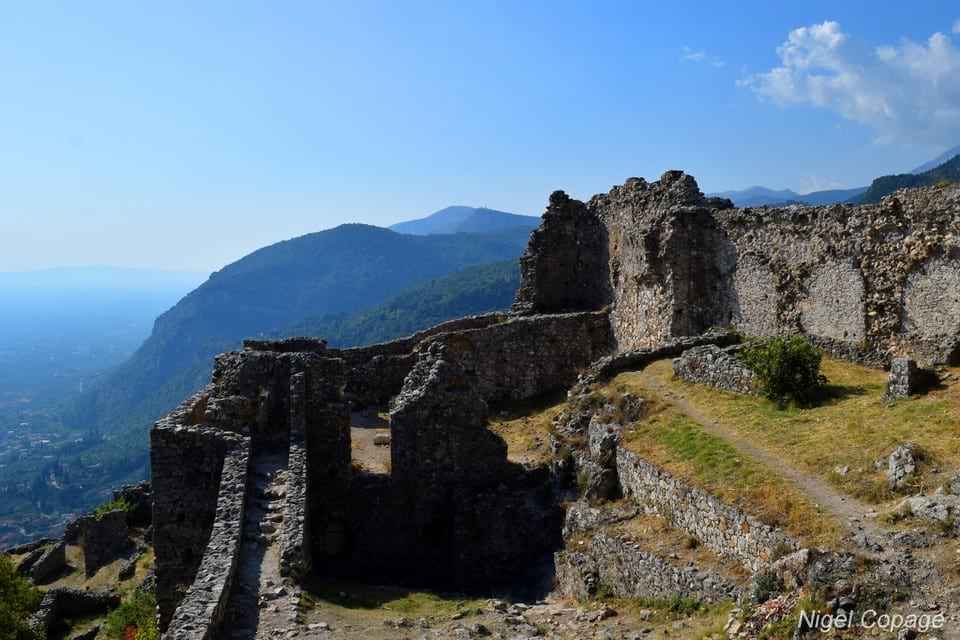
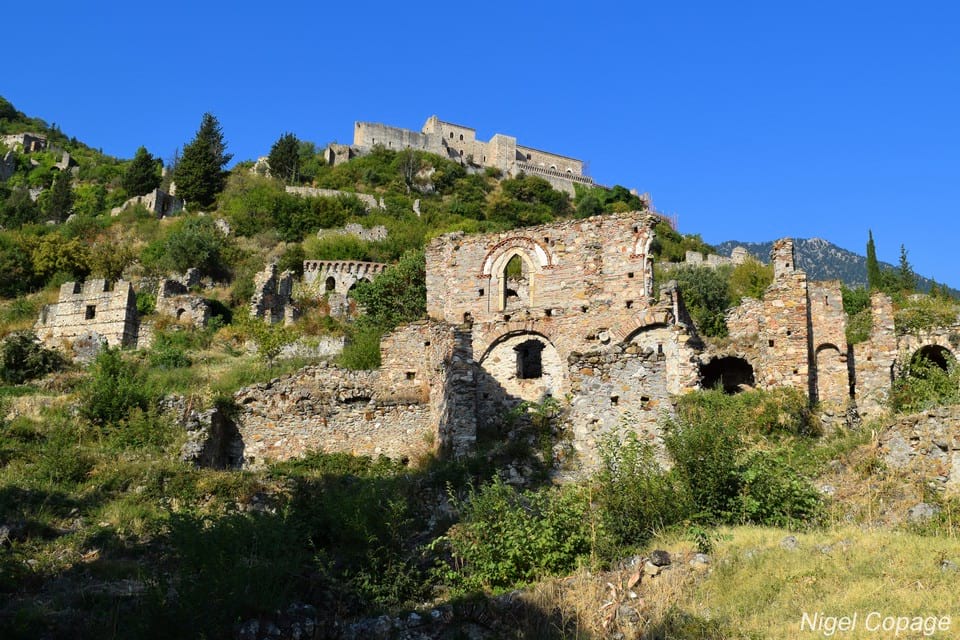
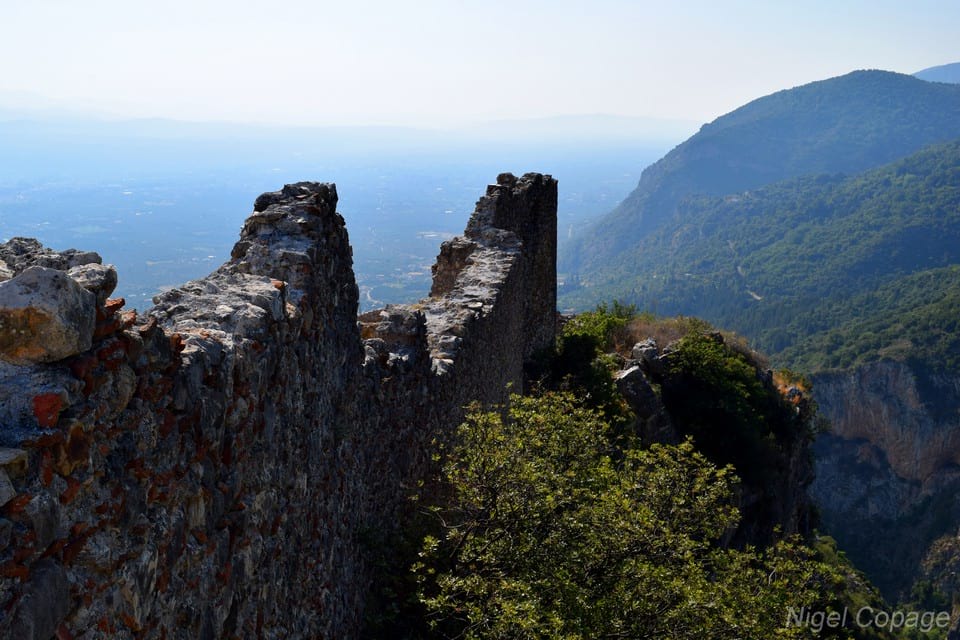
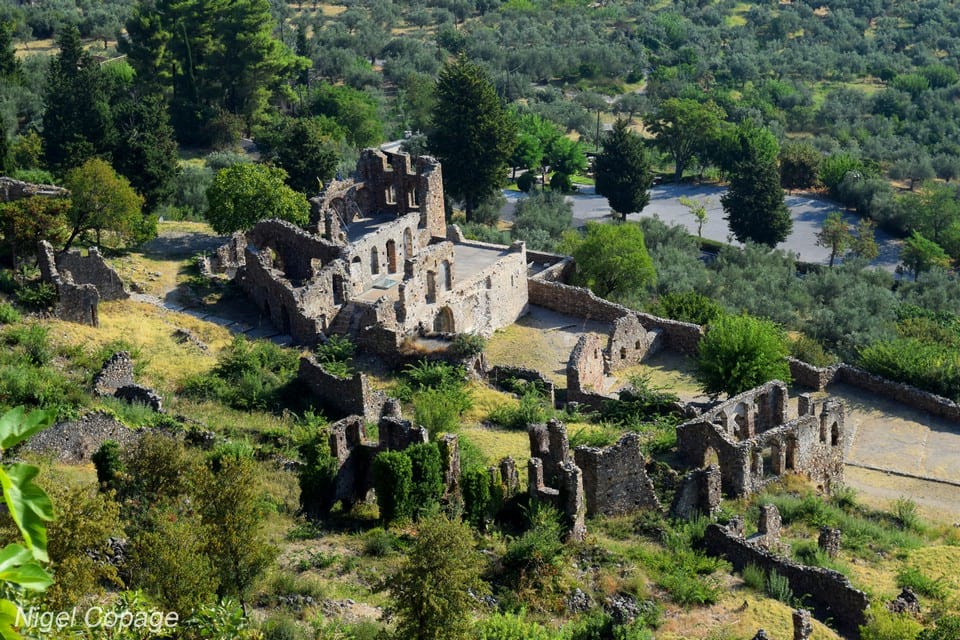
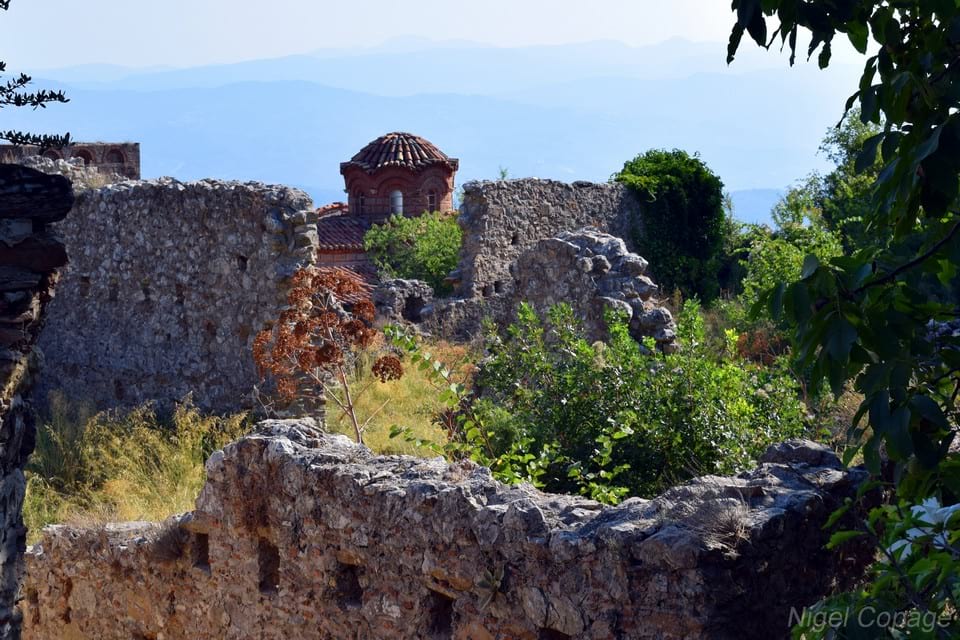
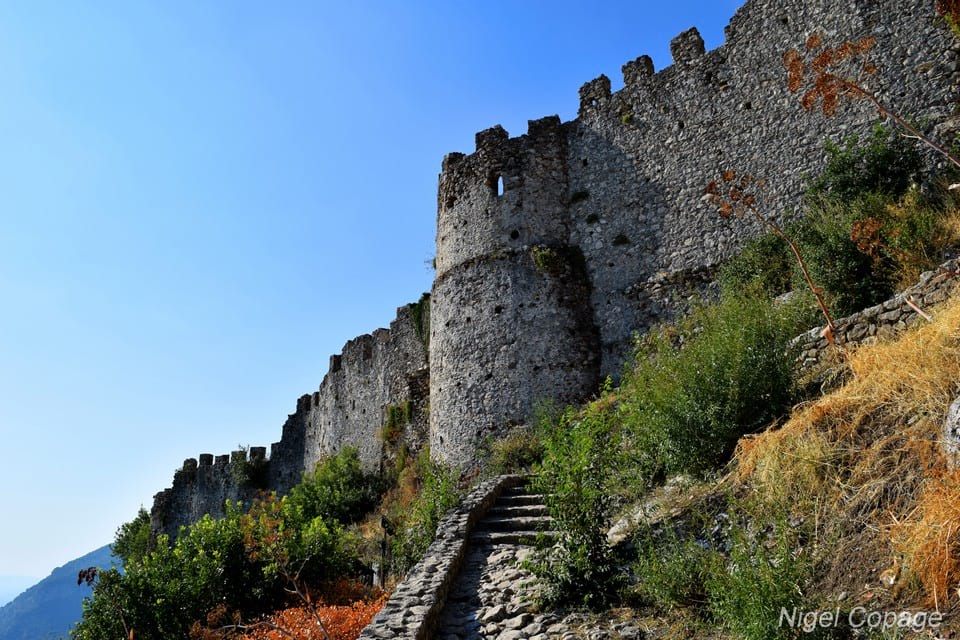
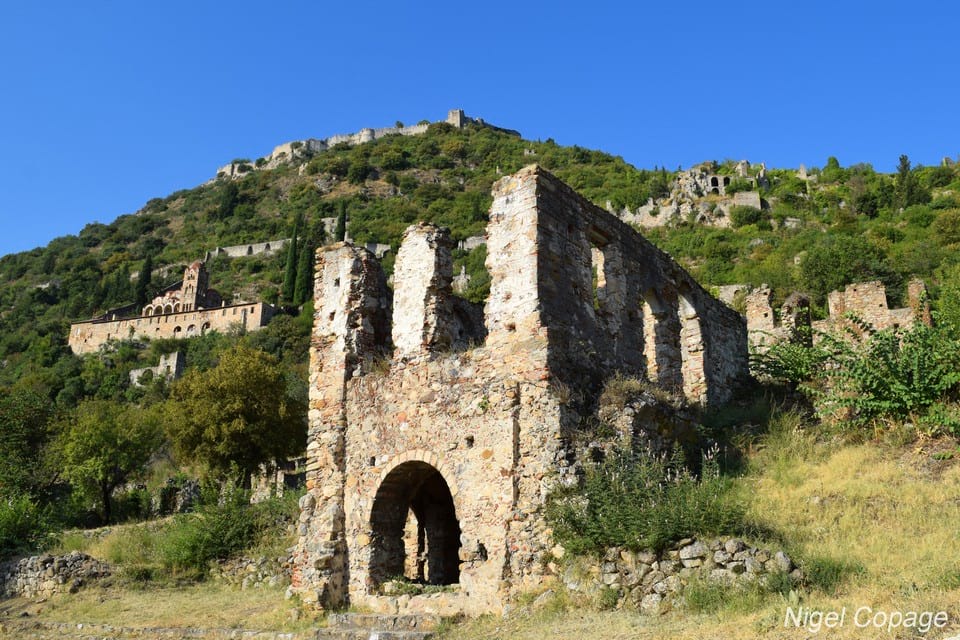
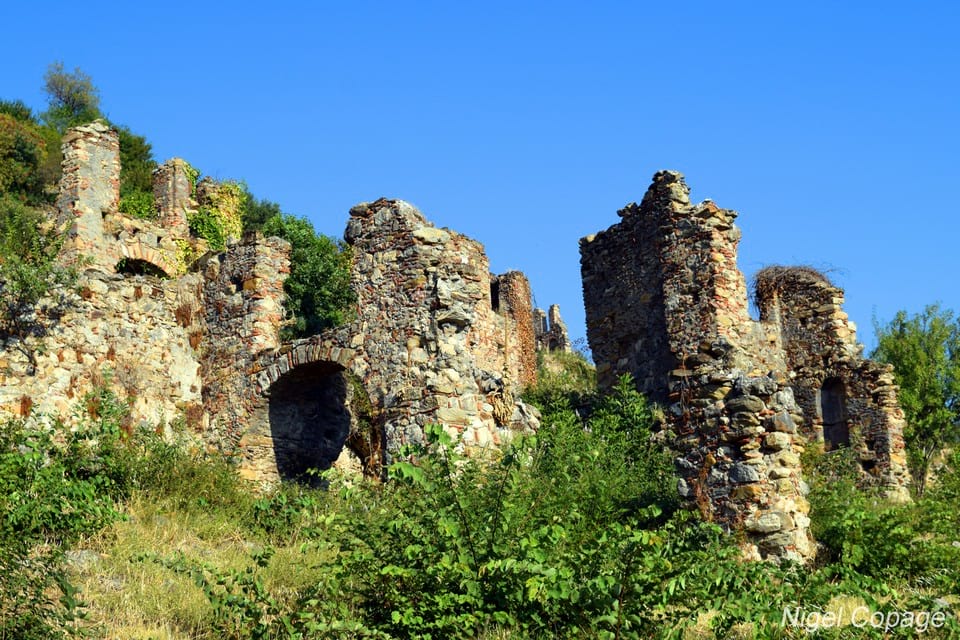
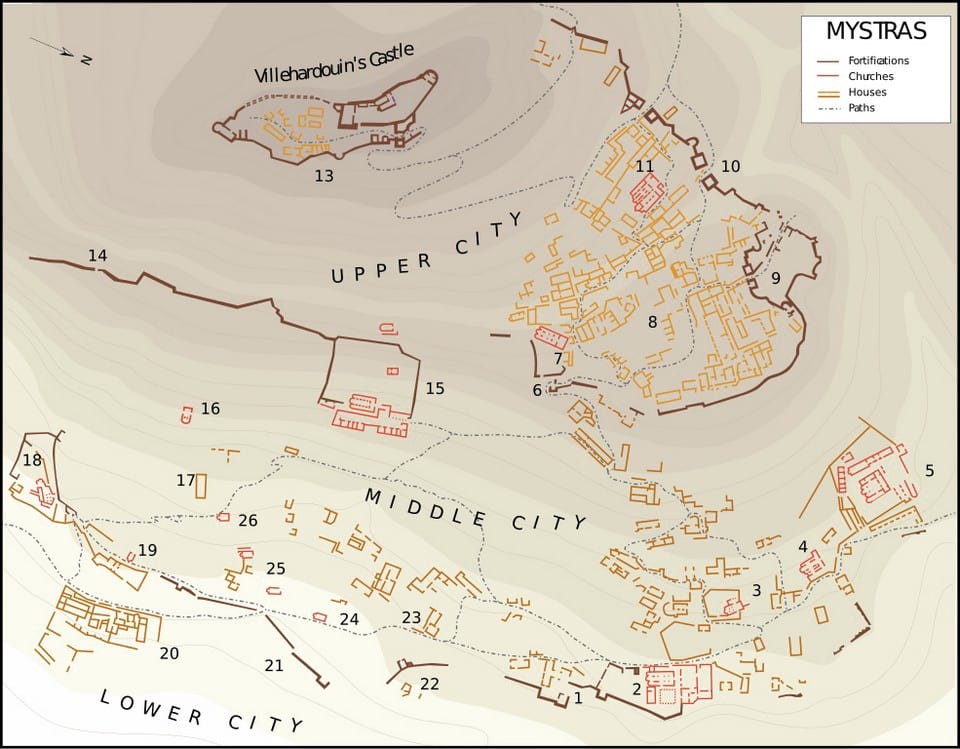 Plan of Mystras after works by G. Millet (1910) and M. Chatzidakis (1981) from Wikipedia
Plan of Mystras after works by G. Millet (1910) and M. Chatzidakis (1981) from Wikipedia